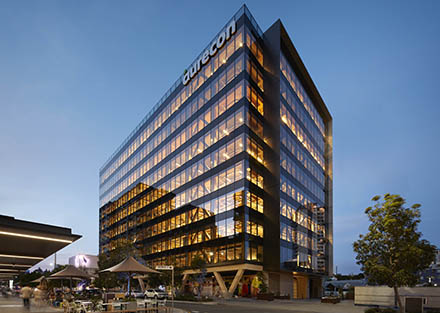A lot has changed in the building of tall timber buildings since the last Timber Offsite Construction conference in 2019. At that conference tall timber buildings were being presented as something of a “novelty”. Source: Timberbiz
Three years and a pandemic later they are almost, if not already, considered mainstream.
And they will be the principal subject of this year’s Timber Offsite Construction 2022 Conference & Exhibition in Melbourne next week
“That is one of the one of the significant changes that has occurred in that timeframe from where we were in 2019,” conference director Kevin Ezard said.
“And where we are now is that the tall buildings are really going up quite rapidly.
“And so that’s really a realization of how timber building can be constructed to height.
“If you go back five years, and somebody said, we’re going to build a 50 story building in Perth, we’d say you are mad.”
He said that the tall timber buildings differentiator had emerged really only in the past four years.
And while once it was only involved some “curiosity buildings” in Europe, particularly in northern parts in Finland, now they are becoming common in the United States, Canada, and in Australia.
“That’s probably the biggest single change that has occurred is those tall buildings.”
Mr Ezard said there had been some resistance to using timber.
“From my observation, the resistance was from the change that was required from building a conventional steel and concrete building to a timber building,” he said.
“The process is so different, that a lot of builders made sure that the pricing of the timber was higher than concrete, and it was therefore too expensive.
“The client was told, if you want to spend all this extra money, that’s up to you, but you know, blah, blah, blah.”
The client often responded by thinking he wasn’t going to pay more and told the builder to just go ahead with what they were going to do.
“So there was that ability for the construction companies to make sure that concrete was the chosen method,” Mr Ezard said.
“But now, there are examples out there of buildings that are timber and are successful.
“And they were marginally more expensive, but in some cases, breakeven.”
But building with timber often turned out quicker and the client had the possibility of making even more money because they got the building sooner.
“I think what we are seeing now is developers who are developer-builders. They are really taking charge of the process, and that in itself is then allowing timber to be favoured.
“And we are now getting more resource within the design fraternity.
“The timber construction industry is growing, in its capacity to perform, to supply and do what needs to be done.”
Mr Ezard said this year’s conference would differ very little from the conference planned for 2020.
“I suppose that the projects would be where the changes are, the projects that are close to completion. And there some new ones,” he said.
Timber Offsite Construction is on in Melbourne from 21-22 June. Today is the last day to register for next week’s Timber Offsite Construction conference. To register go to https://www.timberoffsiteconstruction.com/event/11c690b5-0e96-4293-8809-d8b4738f4724/regProcessStep1






